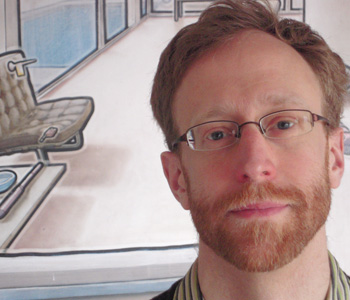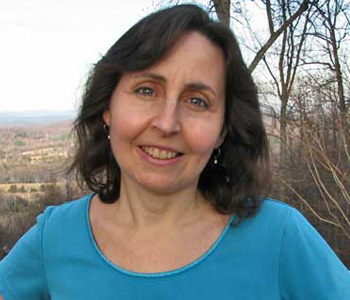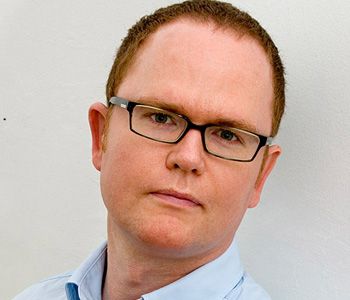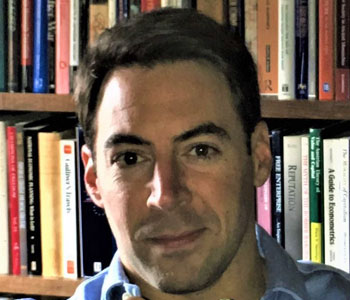Theodore M. Porter
Genetics in the Madhouse: The Unknown History of Human Heredity
Princeton University Press
464 pages, 6 1/8 x 9 1/4 inches
ISBN 978 0691164540
Genetics in the Madhouse examines the study of human heredity historically, from the ground up. The gene eventually comes into the story, as anyone would expect, but in an odd and inglorious role. That is partly because the story takes off more than a century before anyone ever spoke of “genes” or “genetics,” about 1789. I focus on problems and places that mattered for those who first labored to establish rules of hereditary transmission in humans. Their chief concern, as I have tried to demonstrate, was the terrible problem of madness. The science of human heredity first took form in insane asylums.
Then, as now, heredity was a data science. The treatment of mental illness underwent a radical reform beginning in the 1790s. The new moral treatment aspired not to drive out demons but to cultivate the elements of rationality that were retained even by the mad. Old forms of treatment were now condemned as senseless and cruel. Insanity, the reformers proclaimed, was a disease, whose victims were not to be blamed. The new asylum, replacing the old “madhouse,” was to be scrupulously ordered and regulated. The public expense to support these new institutions demanded scrupulous patient records, as well as financial ones; annual reports were organized mainly around statistics. The most important of these numbers, apart from demographic information on admissions and outcomes, was the statistics of causes: appropriate tables made heredity visible and even measurable.
It seems that the idea of inherited insanity was not really new, not even in 1789. The tables of causes, which almost always showed heredity in a lead role, were based mainly on what family members told the asylum doctors in an admission interview. Inheritance of insanity was a familiar folk belief. About 1840, passive recording began to give way to determined investigation of family members similarly affected. Instead of simply tallying the causes supplied to them, doctors constructed increasingly elaborate tables to link causes with disease forms and cure rates. By this time, a few doctors were using institutionalized patients as a point of entry for investigations of insanity as a family disease. Later in the century, they began calculating probabilities of mental illness in the offspring based on the health status of the progenitors. The documentation of causes now took on increasing urgency. Insanity rates did not diminish in the face of new treatment ideals but expanded unremittingly right through the nineteenth century and beyond. Soon it was impossible to believe that medical treatment could turn back the insanity explosion. Eugenics (as it came to be called), the effort to combat insanity by preventing its victims from reproducing, arose very early as part of the program.
All of this took place with very little involvement of scientific academies or universities. About 1900, when Mendelian genetics and biological statistics—a rival approach to the medical and statistical science of heredity—appeared on the scene, their practitioners looked around and discovered that asylum doctors already commanded the expertise to analyze their unmatched data reserves.
When I began graduate school in 1977, the history of science was mainly about theories. I had been drawn to the field by the work of Thomas Kuhn, whose famous book The Structure of Scientific Revolutions gave us such concepts as “paradigm shift.” By then, history of science had become a recognized field of historical investigation. Serious historians were expected to leave textbooks behind and examine the real work of science, including its concrete aims and resources. I worked on my dissertation and first book in this spirit. My topic was the origin of basic statistical tools and understandings articulated by mathematicians and natural scientists in the nineteenth century. This led me to social numbers by way of the Belgian astronomer and social statistician Adolphe Quetelet. He was part of my original plan, but I had not understood that the work would lead me into moral and administrative discussion stimulated by political and industrial revolutions. New ideas and understandings remained central, but I now linked them to bureaucratic tallies and debates tied to prison reform, trade policy, public health, and poor law administration.
Nowadays, my colleagues often speak of a material turn, meaning that there is a new focus in the field of history of science on the stuff that scientists work with such as instruments, reagents, biological collections, filing cabinets, and calculating machines. I have welcomed this move, not least because a focus on material reality opens a still wider perspective on science and its technologies, calling attention to concrete circumstances of labor and administration that extend beyond these now-fetishized material objects. In my book on asylums and heredity I have given close attention to admission registers, patient case books, census cards, and the diverse tabular arrangements by which the data were structured. In this sense, the statistics of madness may also be spoken of as “materialized.” But it is more than that. This research required close attention to the roles of numbers and statistics in medical administration and public persuasion. Data provided a basis for accountability and lent credence to hopes for a reasoned perspective on madness. Such deeply mundane tools can play a fundamental role in ordering the world.
In short, this book embodies an emerging scholarly focus on mundane realities that extend well beyond basic science. More specifically, the book got its start after I was invited to write a paper for an edited volume on the multifarious sites and sources of heredity. This request inspired me to look into the statistician Karl Pearson’s sources for statistical data on human heredity. It was a lucky choice; many in-principle good ideas lead to dead ends but this one opened up wonderfully.
While diligent readers who behave according to the plan should recognize the coherence of this project, it has, I admit, an inescapably far-flung character. The long chapter titles attest to my earnest effort to lay bare the reason behind such ostensible madness. If they fall short, I may yet hope that that readers will be amused by the abundance of curiously-pertinent episodes narrated here.
The sixth chapter, for example, features a mostly-forgotten Norwegian asylum doctor, Ludvig Dahl, who received a state research grant to investigate certain parishes with disproportionately high rates of mental illness. For decades, beginning with its first census of insanity in 1828, Norway had shown a distinctively high insanity rate, especially for a country of farmers and fishermen. Many, including Dahl himself, suspected that this result was merely an artifact of its uniquely thorough census. He proceeded, nevertheless, to survey in exacting detail some of the most insanity-ridden parishes of Norway. He concluded in his book-length report that a high concentration of insanity might have less to do with environmental or cultural differences than with the presence and transmission of a specific hereditary tendency or factor (in written Norwegian, Anlæg).
It requires, perhaps, a mad-statistical specialist to love the tables constructed by these alienists (asylum doctors). Tabular reasoning, in any case, was their most basic tool for investigating patterns of heredity. Dahl’s contemporary Wilhelm Tigges was perhaps the most diligent and ambitious of the German table-makers. He set out to arrange his abundant data to poke holes in the rising French theory of hereditary degeneration. The reasoning here is a bit complicated, and the data work must have been extraordinarily burdensome. In a strict sense, he failed, for dégénérescence grew into a great cultural phenomenon, taken up with gusto by an international movement of physicians, writers, and artists. I hope that some readers at least will laugh, as I do, when confronting this weirdly incongruous—yet somehow effective—effort to seize and debunk the mystic fluidity of degenerative heredity.
Apart from its introduction and conclusion, the book begins in 1789 with an episode of royal madness and a desperate search for data to determine the likelihood of George III’s recovery and it culminates with some brooding over the geopolitical consequences of a mass campaign to sterilize every bearer of a supposed recessive gene for mental defect. Not long after I began the project, it dawned on me that madness makes an appearance in many, possibly most, movies, novels, and operas. And not for nothing.
The madman (or woman) in a performance is usually there for comic effect, but the actual experience of madness is dismayingly tragic. Many of my characters, especially in the early 1800s, envisioned that the insane could be cured and the disease practically eliminated. The association of insanity with a science of heredity implied a loss of faith in cures and, simultaneously, a dream that the regulation of human reproduction might provide a solution of a different sort. Modern historians have debated whether the true origins of human genetics were bound up with eugenic tools and ambitions. My “unknown history,” of “genetics in the madhouse” aspires to show that eugenic ambitions were present, so to speak, in the very DNA of human genetics. Here I use ironically a locution that I generally prefer to avoid.
I regard the subject matter of this book as a formative phase in a long history of genetic overreach. The faith that mental disabilities could be relieved most effectivity by restricting reproduction, already prominent in the nineteenth century, was greatly strengthened after 1900, when the late recognition of Gregor Mendel’s long-ignored work inspired extraordinary anticipations of eugenic triumph over mental defect. I do not claim any competence to anticipate what might be possible in the future, but we should at least be realistic about the past and present. The Human Genome Initiative, for example, presented a vision of critical discoveries arising from laboratory research supported by massive computer power. The data work of madhouse doctors, though tending also to overreach, at least acknowledged their dependence on data and insights from mundane human institutions such as hospitals, schools, prisons, and state surveys.
Human genetics did not spring from the flowing curves of DNA like Athena from the head of Zeus, but had its start amidst the stench, the moans, and the punishing remedies of medical-bureaucratic institutions for the treatment and confinement of the mad. Genetics continues to rely on data and tissues taken from such people. It has proved far from straightforward to do much to relieve their suffering.




We don't put paywalls. We don't distract you with ads. We don't sell your data.
Please help to keep this running!